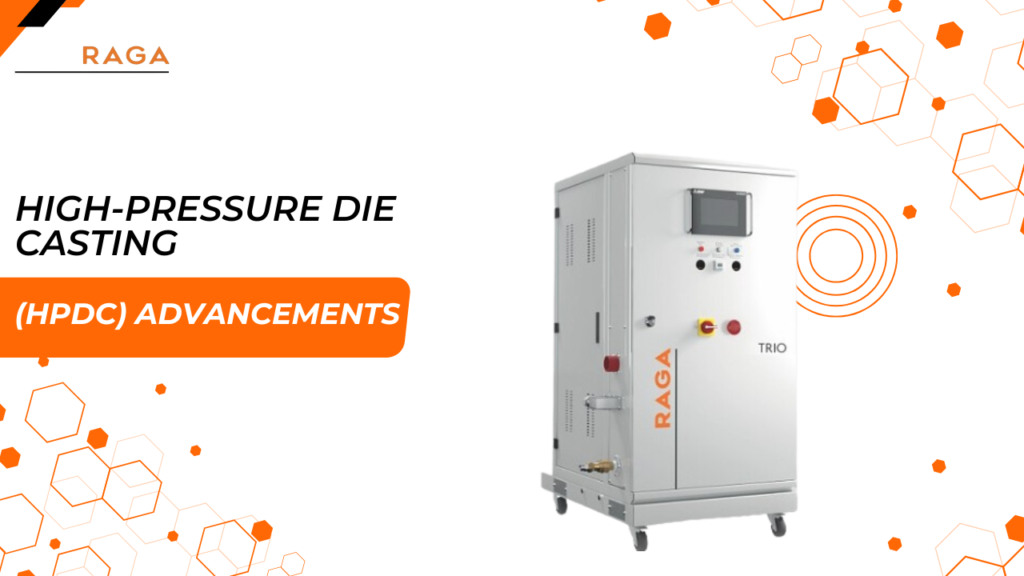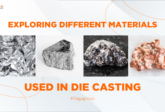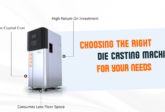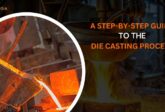The Future of Die Casting Technology: Innovations to Watch

Die casting technology is at the heart of manufacturing, producing precise metal parts for sectors ranging from automotive to aerospace. In 2022 alone, the global die casting market was valued at over USD 73 billion, with rapid advancements shaping a promising Future of Die Casting. With new materials, digitalization, and sustainability initiatives on the horizon, the die casting industry is undergoing significant innovation. This blog explores emerging trends and technologies in die casting that are paving the way for more efficient, high-quality, and environmentally conscious manufacturing.
Overview of Die Casting Technology
Definition and Process:
Die casting is a metal-forming process where molten metal is injected into a mould under high pressure to create complex, detailed parts. This technique delivers high precision and consistency, making it ideal for large production runs.
Current Applications:
Die casting is widely used across industries including automotive, aerospace, consumer electronics, and medical devices. Automotive components, engine housings, medical implants, and smartphone frames are just a few examples of how integral die casting has become in modern manufacturing.
Advanced Materials
New Alloys:
Developments in aluminium and magnesium alloys are bringing lighter yet stronger materials to the forefront. New aluminium alloys offer enhanced strength-to-weight ratios, corrosion resistance, and thermal conductivity, making them perfect for industries like automotive and aerospace.
Composite Materials:
Composite materials are gaining traction as they combine metal’s durability with the lightweight properties of other materials. These composites allow for die-cast components that are both lightweight and resilient, ideal for applications where weight reduction is essential.
High-Pressure Die Casting (HPDC) Advancements
Process Optimization:
New HPDC technologies are refining the metal injection process, leading to better control over the filling and solidification phases. By optimising these stages, manufacturers achieve more uniform and defect-free parts.
Quality Enhancements:
Techniques like vacuum-assisted HPDC reduce porosity and improve mechanical properties, resulting in stronger, denser parts. Enhanced cooling methods are also improving the solidification process, minimising common issues like warping and shrinkage.
Automation and Robotics
Integration of Robotics:
Robotic systems are now widely used for tasks like part extraction, quality inspection, and even surface finishing. This automation streamlines the production process, ensuring consistent quality while reducing human error.
Efficiency and Safety:
Automated die casting cells increase production speed and worker safety. By taking over repetitive tasks and reducing manual labour, robotics allow for cost-effective and safe production environments, essential for high-demand manufacturing.
Industry 4.0 and Digitalization
IoT and Data Analytics:
With IoT sensors embedded in die casting machines, manufacturers can monitor real-time data for factors like temperature, pressure, and cycle time. Data analytics then help optimise the die casting process by identifying and rectifying any deviations, reducing downtime, and improving overall efficiency.
Digital Twin Technology:
Digital Twin Technology replicas of physical processes that allow manufacturers to simulate and optimise die casting operations virtually. By modelling potential issues before they occur, digital twins improve process control, reduce material waste, and enhance overall productivity.
Additive Manufacturing and Hybrid Processes
3D Printing:
Additive manufacturing, commonly known as 3D printing, complements die casting by enabling the creation of complex geometries that traditional die casting might struggle to achieve. Hybrid processes that combine die casting with 3D printing allow for highly customizable, intricate parts.
Tooling Innovations:
3D printing is also revolutionising die casting by enabling the production of custom mould inserts and tooling components. This flexibility in tooling design allows for quick adjustments, faster prototype iterations, and lower production costs.
Environmentally Friendly Practices
Sustainable Manufacturing:
Die casting is becoming more eco-friendly with efforts to minimise energy consumption and waste generation. New machines are designed to use less energy, and optimised processes reduce emissions, contributing to greener manufacturing practices.
Material Optimization:
Sustainable materials, including recycled aluminium and other eco-friendly alloys, are being introduced into die casting. This not only reduces the environmental footprint but also caters to the growing demand for sustainable products in consumer markets.
Conclusion
The future of die casting technology is brimming with innovation, from advanced materials and process optimization to digitalization and sustainability. As these technologies evolve, die casting is set to deliver even higher precision, efficiency, and environmental responsibility. By staying ahead of these trends, manufacturers can leverage the latest advancements to produce top-quality parts while reducing costs and waste.
Frequently Asked Questions (FAQs)
What is die casting technology?
Die casting is a manufacturing process where molten metal is injected into a mould cavity under high pressure to produce precise and complex metal parts.
What are the latest materials being used in die casting?
Recent advancements include new aluminium and magnesium alloys, as well as composite materials that offer improved strength and reduced weight.
How is automation impacting the die casting industry?
Automation, including the use of robotics, is enhancing efficiency, reducing costs, and improving safety by handling repetitive tasks and quality inspections.
What role does Industry 4.0 play in die casting?
Industry 4.0 technologies, such as IoT sensors and data analytics, enable real-time monitoring and optimization of the die casting process, leading to better quality control and operational efficiency.
How is die casting becoming more environmentally friendly?
Innovations in sustainable manufacturing practices, such as reducing energy consumption and waste, along with the use of eco-friendly materials, are making die casting more environmentally friendly.





